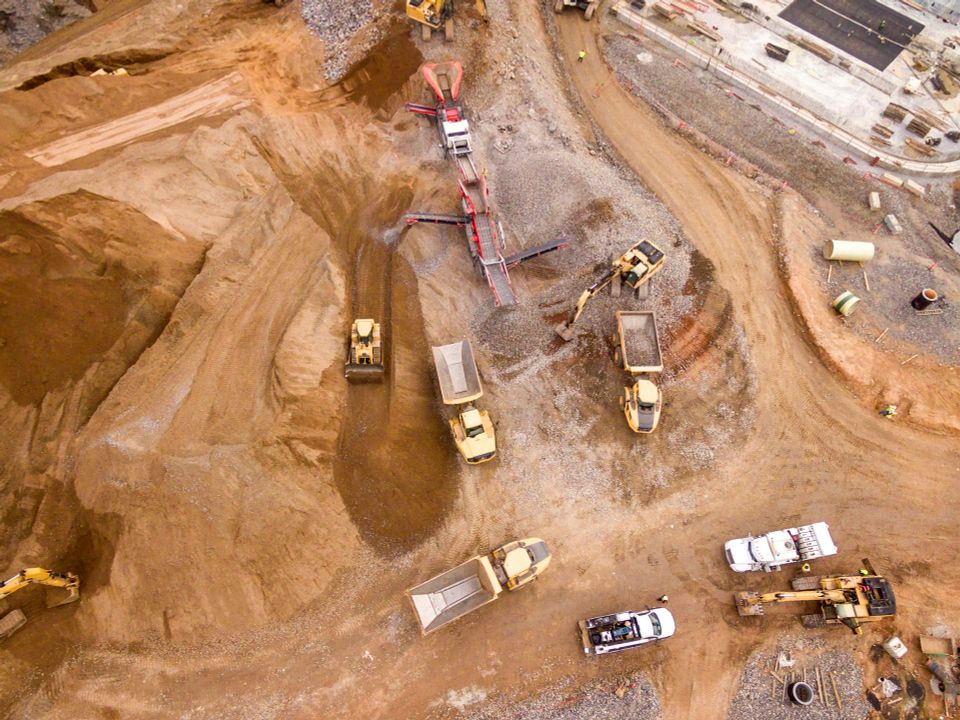In many regions, dealing with high moisture content in soils during construction projects poses a significant challenge that can stall progress and increase costs. Excessive moisture in soils can lead to poor compaction, loss of bearing capacity, and unstable foundations, ultimately compromising the integrity and longevity of the completed project. To tackle these challenges, construction professionals rely on innovative methods such as Soil Dry Down techniques to expedite their groundwork and safely minimize soil moisture content. Utilizing the right tools and techniques, construction professionals can effectively dry out soggy soil, creating a more suitable environment for a diverse array of construction projects.
In this insightful blog, we will delve into the nuances of Soil Dry Down solutions, exploring the various methods available, their advantages, and successful implementation strategies. We will also discuss the challenges often associated with high soil moisture content and the critical role of Soil Dry Down techniques in overcoming these obstacles for efficient construction projects. Additionally, we will provide guidance on how partnering with Terra-Firma Stabilization & Reclamation, a leader in Asphalt Pulverization, Soil Improvement & Modification, Soil Stabilization, and Full-Depth Reclamation, can expedite your groundwork processes and dramatically improve project outcomes through custom-tailored Soil Dry Down solutions.
Unlock the full potential of your construction projects by understanding and harnessing the power of Soil Dry Down techniques. Join us as we explore this essential construction solution and learn how teaming up with Terra-Firma Stabilization & Reclamation can offer unparalleled support in navigating and tackling the complex challenges related to high moisture content in soils.
Understanding the Impacts of High Soil Moisture ContentHigh soil moisture content can create substantial challenges in construction projects, with far-reaching implications that affect overall project success. These issues may include:
a. Compaction and Bearing Capacity: Excess moisture can reduce the soil's compaction ability and bearing capacity, significantly impacting the quality of foundations, pavements, and other essential structures.
b. Construction Efficiency: Damp soil is more difficult to excavate, transport, and grade, resulting in increased costs, project delays, and reduced efficiency.
c. Structural Integrity: Saturated soil is more susceptible to freeze-thaw cycles, expansion, and settlement issues, affecting the overall structural integrity and lifespan of the completed construction.
d. Environmental Considerations: High-lying water tables, seasonal rainfall, or flood-prone areas can exacerbate soil moisture problems, complicating project management and requiring careful planning and tailored solutions.
Soil Dry Down Methods for Moisture ManagementTo combat the challenges posed by high soil moisture content, construction professionals can employ various Soil Dry Down techniques, including:
a. Mechanical Dewatering: Mechanical dewatering involves the use of pumping systems or specialized dewatering equipment to remove excess water from the construction zone.
b. Drainage Systems: Installing temporary or permanent drainage systems, such as trenches, ditches, or French drains, prevents water from infiltrating the construction site and facilitates effective moisture management.
c. Lime or Cement Treatment: Mixing lime or cement into the soil can facilitate drying and stabilization by promoting evaporation, reducing moisture content, and enhancing soil strength.
d. Evaporation and Solar Drying: This technique takes advantage of natural evaporation and solar energy, accomplishing dehydration through aeration, grading, or rotary tilling to expose soil to air and sunlight.
Best Practices for Implementing Soil Dry Down TechniquesFor Soil Dry Down solutions to be effective, construction professionals must be mindful of the following best practices:
a. Soil Analysis: Conducting a thorough soil analysis to determine the moisture content, composition, and properties of the soil is vital to selecting and implementing the ideal Soil Dry Down technique.
b. Seasonal Considerations: Construction professionals must consider seasonal trends in weather patterns and account for anticipated rainfall or temperature fluctuations to inform the selection and execution of Soil Dry Down solutions.
c. Active Monitoring: Regularly monitoring the moisture content of treated soil ensures a timely and efficient drying process, avoiding project delays and potential rework.
d. Collaboration with Industry Experts: Partnering with soil stabilization and dry down specialists, such as Terra-Firma Stabilization & Reclamation, can provide access to valuable expertise, technologies, and support, thereby optimizing results and project outcomes.
Cost Savings and Environmental Benefits of Soil Dry Down TechniquesOpting for Soil Dry Down solutions comes with the potential for considerable cost savings and environmental benefits:
a. Increased Efficiency: Implementing Soil Dry Down techniques streamlines and expedites construction processes, reducing project costs through quicker completion timelines and a more efficient approach to addressing moisture issues.
b. Material Conservation: By improving the characteristics of the existing soil, Soil Dry Down techniques reduce the need for importing new material or disposing of unsuitable soil, creating cost savings and minimizing environmental impacts.
c. Reduced Emissions and Energy Usage: The decreased need for transportation and material handling associated with Soil Dry Down solutions contributes to reduced greenhouse gas emissions and overall energy usage in the construction project.
Fostering Efficient Construction with Soil Dry Down SolutionsManaging high soil moisture content is an ongoing challenge for many construction projects. However, through the effective implementation of Soil Dry Down techniques, professionals can expedite their groundwork, maintain project timelines, and improve overall project outcomes.
Partner with Terra-Firma Stabilization & Reclamation, a leader in Asphalt Pulverization, Soil Improvement & Modification, Soil Stabilization, and Full-Depth Reclamation, to take advantage of our in-depth knowledge and expertise. Our Soil Dry Down solutions will help transform your project’s wet soil conditions into workable materials, enhancing the efficiency and effectiveness of construction processes while conserving resources and minimizing environmental impacts.
Contact Terra-Firma Stabilization & Reclamation today to learn more about our comprehensive range of construction support services and explore how our
soil stabilization techniques can drive success in your next project.

